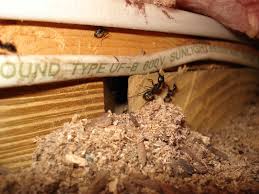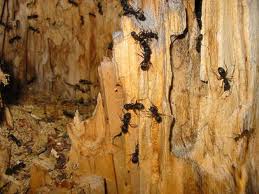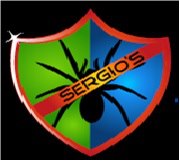Well the warm weather has not started yet this Spring here in West Bloomfield MIchigan. So maybe the ants haven’t started to show up in and around your home. Here are a few steps that you can take to prevent them before its too late.
STEPS FOR CARPENTER ANT PREVENTION
1. Correct moisture problems, roof leaks, and plumbing leaks.
2. Cut back tree limbs or branches that could serve as a bridge to your structure.
3. Seal cracks and openings around the foundation, especially where utility pipes and wires enter from the outside.
4. Firewood needs to be stacked away from the house, elevated off the ground if possible. They love to nest in firewood
Some times it is too late and you already have an infestation. The following is a few questions we will ask when you call Lisa or Colleen in the office at Sergio’s.
Questions Sergio’s will ask you:
1. How long have you noticed the problem?
- A long history of activity indicates a colony located in the structure. In northern regions, activity indoors during colder weather is strong evidence that a colony is located in the structure.
2. How many ants do you see?
- Seeing many ants frequently indicates an indoor colony. If you see them only occasionally, they may be random foragers coming in form the outside looking for food.
3. Where are Carpenter Ants seen most often?
- This will provide a clue to where Carpenter Ants are foraging and nesting.
4. Have you seen any small piles that look like sawdust?
- Frass piles are usually located close to nest sites
5. Have you had any water leaks or noticed any rotting wood ? If so where?
- Carpenter Ants often nest in moist or rotting wood. You should inspect these areas first. Carpenter Ants prefer to nest in moist environments.
If you aren’t sure about any of these questions here are a few tips that you can follow.
1. Conduct inspections in the evening or early morning.
- Carpenter Ants are more active at night, so you’re more likely to observe foraging activity and find the nest.
2. Inspect “lines”.
- Foraging ants like to travel on fence lines, phone lines, roof lines,railings , as well as driveway/ sidewalk borders and edges.
3. Knock on wood near suspected nest sites.
- Look and listen for activity. Carpenter ants sound like crinkling cellophane.
4. Check frass piles for materials such as wood, insulating, plastic, etc.
- Frass material will help indicate specific nest locations.
5. Look for plastic vapor barriers under mulch beds.
- Ants trail or nest under the plastic film.
6. Follow foraging ants carrying the food particles.
- They’re heading back to the nest. Place food in the ants’ path, then follow them back to their nests.
7. Be mindful of weather conditions during the inspections.
- They rarely forage if temperatures are below 55 degrees F.
8. Inspect trees and dead wood.
- They tend to nest in tree holes and dead wood on the ground.
9. Inspect outdoor plants for aphids.
- They like to feed on honeydew.
10. Look for tree branches, shrubs and vines against the buildings.
- Branches and vines provide easy access.
Still unsure if you have a problem? Call us Today and we can set up an appointment for one of our Technicians to come out and do an inspection! (248) 932-0018. Also check back next week for more information on our Carpenter Ant 101 series.




